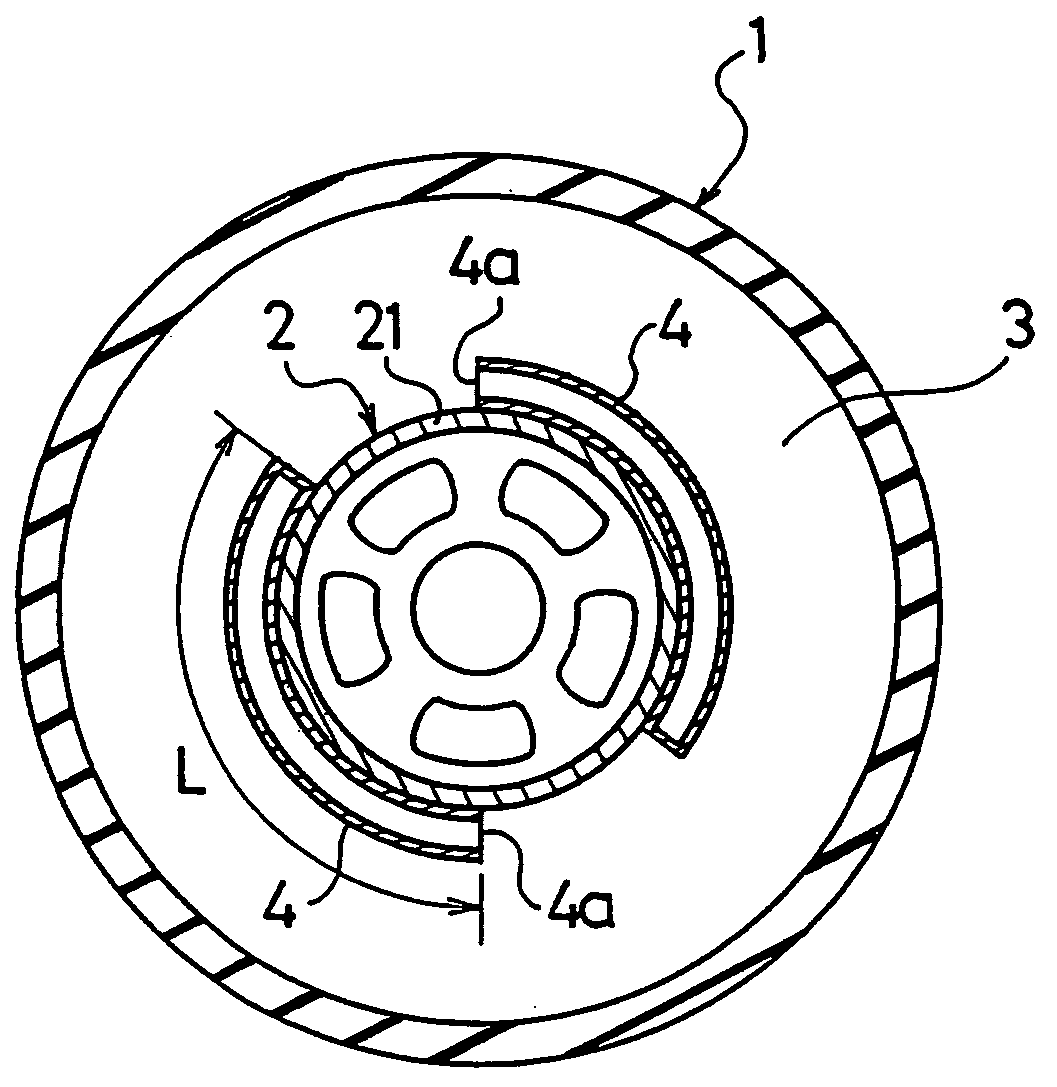Tire wheel assembly
a technology of tire wheel and assembly, which is applied in the field of tire wheel assembly, can solve the problems of cavity resonance noise, interference with tire deformation, cavity resonance noise, etc., and achieve the effect of enhancing the effect of cavity resonance noise reduction
- Summary
- Abstract
- Description
- Claims
- Application Information
AI Technical Summary
Benefits of technology
Problems solved by technology
Method used
Image
Examples
Embodiment Construction
[0029]Hereinbelow, detailed descriptions will be given of configurations of the present invention with reference to the accompanying drawings.
[0030]FIG. 1 schematically shows a tire wheel assembly of the present invention. In FIG. 1, reference numeral 1 denotes a pneumatic tire; and 2, a wheel. This wheel 2 is provided with a rim 21 fitted with the pneumatic tire 1. Additionally, a cavity portion 3 is formed between the pneumatic tire 1 and the rim 21 of the wheel 2. Moreover, in this tire wheel assembly, two tubes 4, 4 are formed so as to open to the cavity portion 3.
[0031]Each of the tubes 4 has one end thereof closed while having a length L approximated to the reference length L0 corresponding to one fourth of a cavity resonance wavelength γ. Opening portions 4a of these tubes 4 are arranged in one arbitrary location on a circumference, or in two locations facing each other across a rotational axis of the tire.
[0032]In the tire wheel assembly configured as described above, vibrat...
PUM
 Login to View More
Login to View More Abstract
Description
Claims
Application Information
 Login to View More
Login to View More - R&D
- Intellectual Property
- Life Sciences
- Materials
- Tech Scout
- Unparalleled Data Quality
- Higher Quality Content
- 60% Fewer Hallucinations
Browse by: Latest US Patents, China's latest patents, Technical Efficacy Thesaurus, Application Domain, Technology Topic, Popular Technical Reports.
© 2025 PatSnap. All rights reserved.Legal|Privacy policy|Modern Slavery Act Transparency Statement|Sitemap|About US| Contact US: help@patsnap.com



